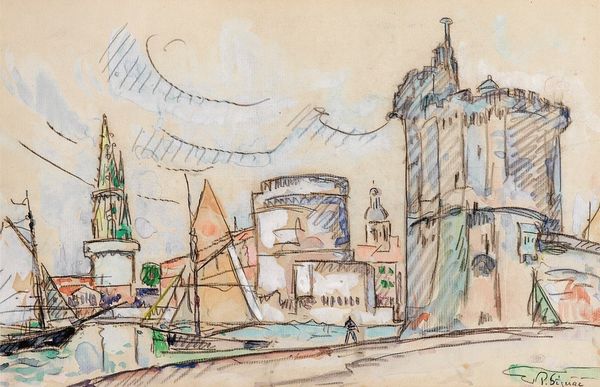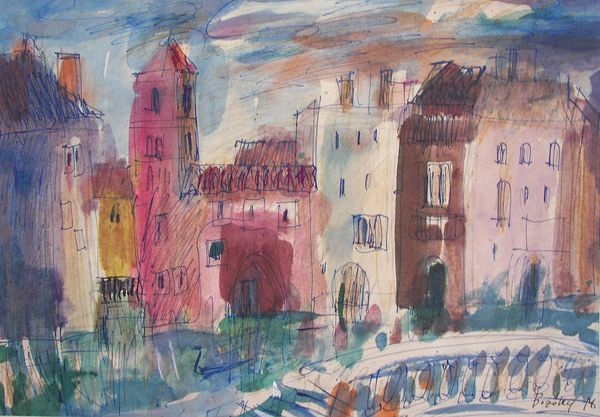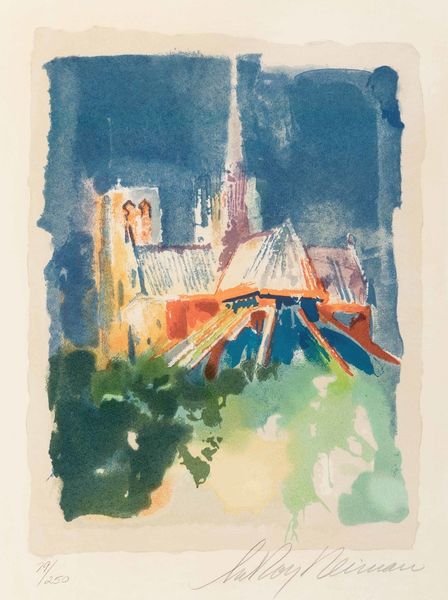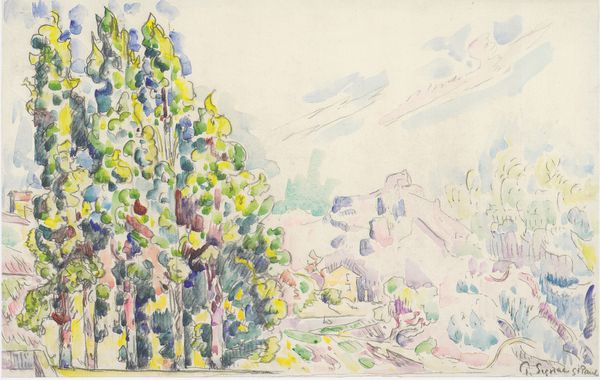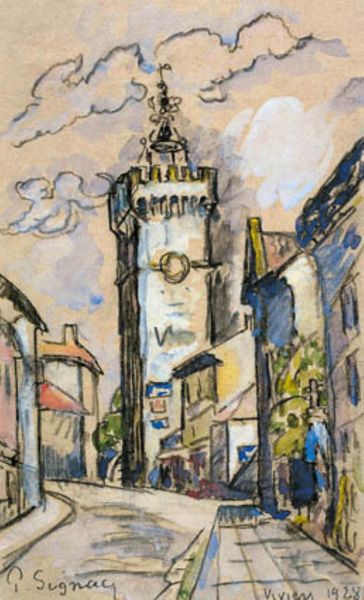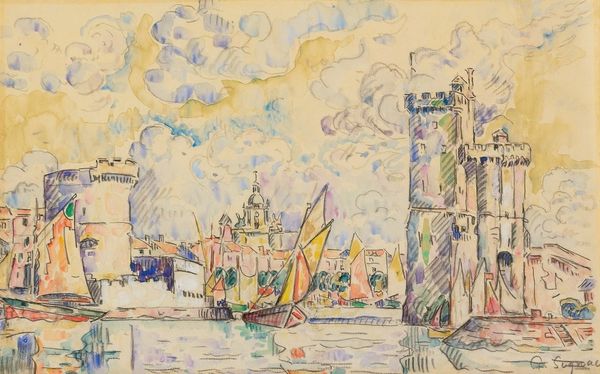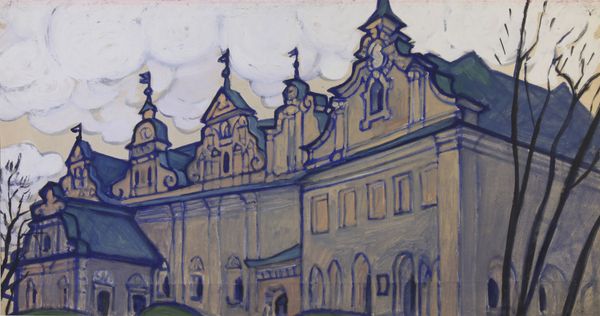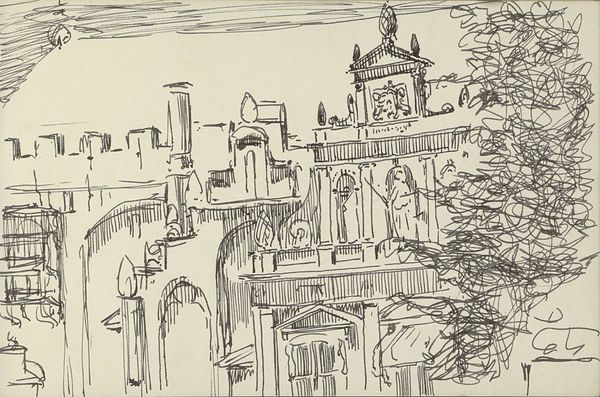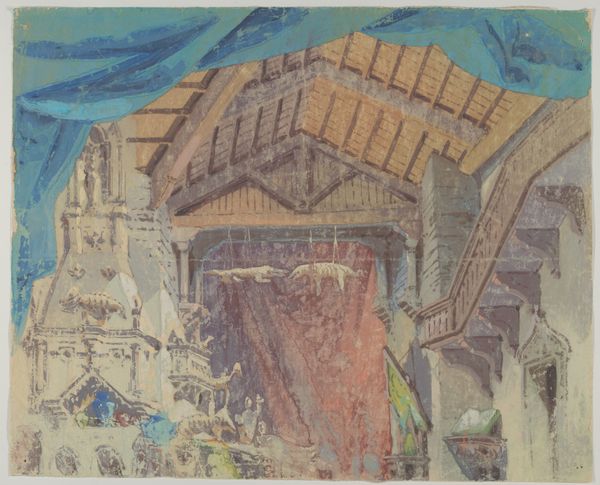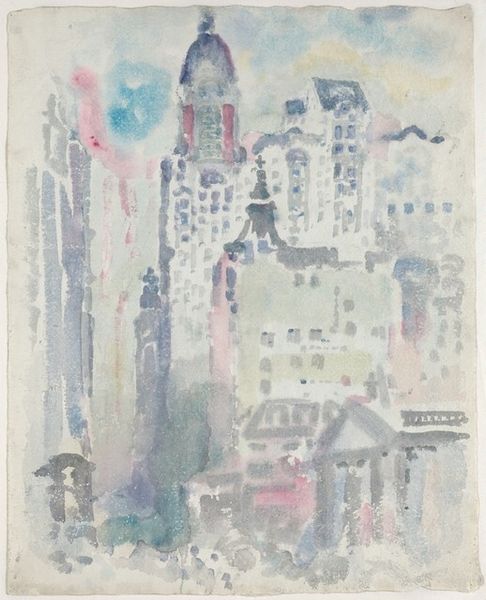
Dimensions: 22 x 23.5 cm
Copyright: Public domain
Editor: Here we have Paul Signac's 1923 watercolor, "Rodez," currently housed at the Albertina in Vienna. I'm immediately struck by its almost cartoonish brightness, a playful rendering of what looks like a quiet town square. What can you tell me about this piece? Curator: The real interest for me lies in understanding how Signac’s materials and techniques shaped the production of this cityscape. Watercolor, with its fluidity and demand for immediacy, dictated a process vastly different from his more formal, pointillist oils. How does that inform our reading of "Rodez" as both a representation and a document of its own making? Consider how readily available were his materials in 1923. Editor: So, by looking at the medium, you're saying we can consider the piece more about the experience of creating art, of plein-air painting specifically? Curator: Exactly. We see here not just Rodez, but Signac *making* Rodez. We see his quick notations, the decisions forced by the watercolor's drying time, the portability of the medium allowing for work en plein air. Also consider the labor of creating a large oil painting versus the accessibility of watercolor; this piece speaks to Signac’s artistic choices in a particular social and economic context. Editor: That’s fascinating, it completely shifts how I see it. I hadn't thought about watercolor as a deliberate choice, but more like a preliminary sketch. Curator: Precisely. It challenges that hierarchy, doesn't it? The supposed ‘sketch’ holds its own, due to Signac's masterful handling of material and the circumstances in which it was made. It becomes about democratizing art-making. Editor: Thanks, that gives me a lot to think about regarding Signac’s practice, not just the finished product. Curator: Indeed, understanding the labor and material choices involved unveils so much about the artwork's cultural significance.
Comments
No comments
Be the first to comment and join the conversation on the ultimate creative platform.
